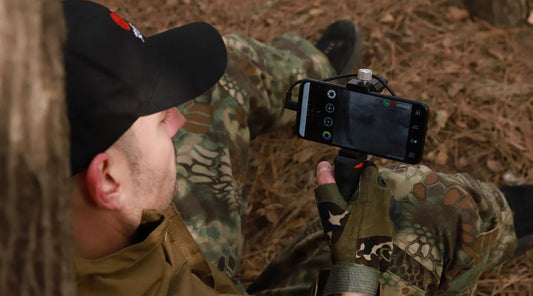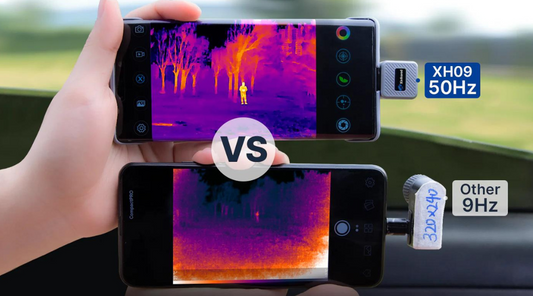Unveiling the Power of Thermal Cameras in Building Inspections and Energy Auditing
Introduction:
Thermal cameras have emerged as indispensable tools in the realm of building inspections and energy auditing. By harnessing the potential of thermal imaging technology, professionals can now identify energy inefficiencies, detect hidden defects, and optimize the energy performance of buildings. In this article, we will explore the myriad applications of thermal cameras in building inspections and energy auditing, highlighting their role in uncovering critical issues and promoting sustainable practices.

Understanding Thermal Imaging in Building Inspections:
Thermal imaging, also known as thermography, is a non-invasive technique that utilizes specialized thermal cameras to capture and analyze thermal patterns emitted by objects. In the context of building inspections, thermal cameras can detect variations in surface temperatures, revealing potential anomalies that may go unnoticed with visual inspections alone.
The Role of Thermal Cameras in Building Inspections:
Thermal cameras play a pivotal role in building inspections, offering invaluable insights into the structural integrity, energy efficiency, and overall performance of a building. Here are some key areas where thermal cameras are employed:
-
Energy Auditing: Thermal cameras are used to identify energy inefficiencies, such as insulation gaps, air leaks, and thermal bridging. By visualizing temperature variations, energy auditors can pinpoint areas that require insulation improvements, weather sealing, or HVAC system optimization.

-
Moisture Detection: Thermal cameras can detect moisture intrusion and water damage, even in concealed areas. By identifying temperature differentials caused by moisture, inspectors can prevent mold growth, structural deterioration, and potential health hazards.
-
Electrical Inspections: Thermal cameras help identify overloaded circuits, loose connections, and faulty electrical components. Hotspots or abnormal heat patterns can indicate potential fire hazards or electrical failures, allowing for timely repairs and preventive measures.
-
HVAC System Analysis: Thermal cameras are effective in assessing the performance of heating, ventilation, and air conditioning (HVAC) systems. By visualizing temperature distributions, inspectors can identify inefficient areas, blockages, or malfunctioning components, leading to improved energy efficiency and cost savings.
-
Building Envelope Assessments: Thermal cameras help evaluate the effectiveness of the building envelope, including walls, roofs, windows, and doors. Thermal anomalies can indicate inadequate insulation, air leakage, or poor construction quality, enabling targeted improvements to enhance thermal comfort and energy efficiency.
Best Practices for Thermal Imaging in Building Inspections:
To ensure accurate and reliable results, following best practices is crucial when using thermal cameras for building inspections and energy auditing. Here are some key considerations:
-
Professional Training: Inspectors should undergo proper training to understand the principles of thermal imaging, interpret thermal patterns, and differentiate between normal and abnormal temperature variations.
-
Standard Operating Procedures: Establishing standardized procedures for data collection, image analysis, and reporting ensures consistency and comparability of results.
-
Environmental Factors: Conducting inspections under appropriate environmental conditions, such as specific temperature differentials, can enhance the accuracy of thermal imaging results.
-
Equipment Calibration: Regular calibration of thermal cameras is essential to maintain accuracy. This ensures that temperature readings and image analysis are precise, providing reliable data for decision-making.
-
Integration with Other Techniques: Thermal imaging should be complemented with other inspection techniques, such as visual assessments and moisture meters, to obtain a comprehensive understanding of the building's condition.
Conclusion:
Thermal cameras have revolutionized the field of building inspections and energy auditing, enabling professionals to identify energy inefficiencies, detect hidden defects, and optimize building performance. By leveraging the power of thermal imaging technology, practitioners can make informed decisions, prioritize maintenance efforts, and promote sustainable practices in the built environment. Staying abreast of advancements in thermal camera technology and adhering to best practices are crucial in harnessing the full potential of this invaluable tool.




